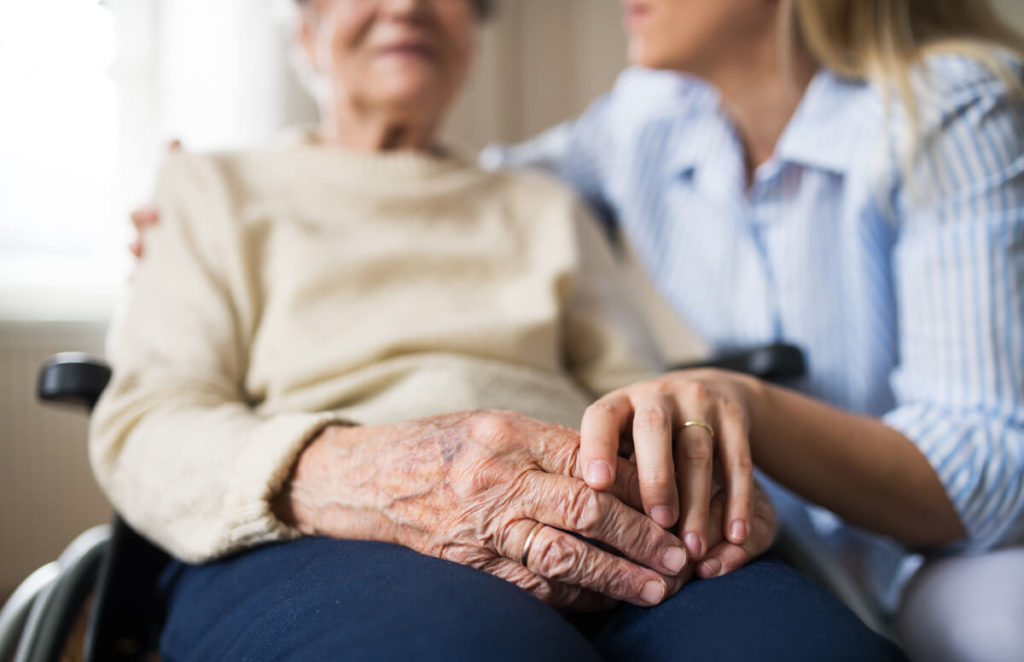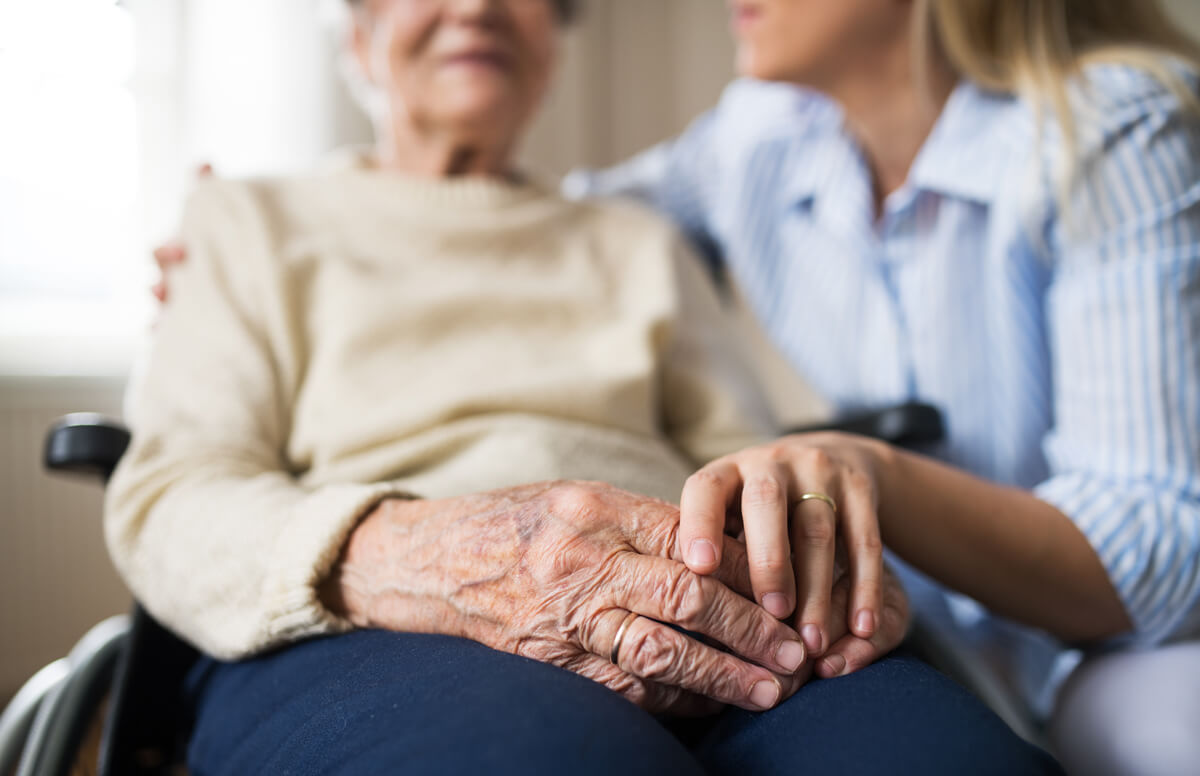by Chuck Otto. This article originally appeared on Next Avenue.

credit: AdobeStock
Caring for a family member, friend or neighbor whose health is compromised by illness, injury or age can be among life’s greatest challenges. And the results of a new AARP study confirm that many non-professional caregivers are doing more medical and nursing tasks than ever.
Home Alone Revisited highlights the breadth and complexity of the tasks demanded of today’s family caregivers. A follow-up to AARP’s 2012 Home Alone study, the new study shows more caregivers are assuming responsibility for particularly demanding procedures once considered the exclusive domain of medical professionals, such as managing incontinence, pain and special diets.
Among the study’s major findings:
- Today’s caregivers provide intense and complex care managing health conditions, including pain.
- Caregivers who are socially isolated or have no choice in caregiving are more at risk for experiencing difficulties with complex care.
- Health systems are not doing enough to prepare unpaid caregivers.
The results reflect the perfect storm of an aging population, escalating health care costs and shortened hospital stays.
The study reveals many caregivers today feel physically and emotionally challenged and woefully unprepared for their work.
“Patients today go home quicker and sicker,” says Theresa Harvath, a registered nurse and executive associate dean at the Betty Irene Moore School of Nursing at University of California, Davis. She also is the founding director of the Family Caregiving Institute.
“Many of the things I studied in nursing school are now expected of (family) caregivers without the same support system,” Harvath says.
The Most Difficult Tasks for Caregivers
According to the Home Alone Revisited survey, tasks considered the most difficult for family caregivers include operating home dialysis equipment, administering test kits, managing catheters, administering enemas and performing ostomy care.
This advanced level of caregiving is becoming more common, and often takes its toll on caregivers, especially those lacking a family or social support network.
Harvath sums up the reality of caregiving today with a startling statistic: “In 1950, you had a one in thirty chance of becoming a family caregiver. Today it’s one in three.”
One Caregiver’s Story
Julie Davidson, 56, a sales and marketing specialist living in the Grand Rapids, Mich., area, provides a textbook case study in parental caregiving, with an extra chapter.
When her father was diagnosed with Alzheimer’s disease several years ago, Davidson made the choice to move to Florida to care for him.
“I got the job because I was single and available,” she admits. It became a three-year commitment, starting with her purchase of a condo next door to her father’s.
Davidson refers to her initial steps into caregiving as “baptism by fire. I had to put alarms on the doors and take away his car keys,” she says.
“I learned about ‘compassionate deception’ (the concept that withholding truth is a reasonable and even ethical choice for those caring for dementia patients) and was fortunate to find a good Alzheimer’s support network in Florida. It was physically and mentally exhausting,” Davidson says.
She continued to work full-time while caring for her father. This required her to bring in an outside caregiver on occasion.
She credits Teepa Snow, a well-known therapist, restorative care specialist and care trainer, with helping her more fully understand Alzheimer’s, which helped her care for her father.
Snow’s model for categorizing different levels of brain function “changed my way of looking at Alzheimer’s,” Davidson says. “It’s much more helpful than simply saying someone has mild, moderate or severe Alzheimer’s. What’s the difference between them, anyway?”
That extra chapter? Davidson’s father eventually was diagnosed with colon cancer. “Now I was changing diapers, learning all about the emergency room — we went there a lot — and, as the cancer took hold, managing his pain,” she says.
“I felt like I needed a chemistry degree just to handle his meds because every nurse described them differently,” she continues. “Even finding him a walker became a big project. There are so many different kinds, and ways to use them.”
Davidson’s father ultimately moved to assisted living, followed by 24-hour care. Even then, there was caregiving work to do. “I had to deal with all of the different facility managers and oversee his finances. I felt like a human resources person,” Davidson says.
Resources for Caregivers
Harvath acknowledges that caregivers seeking professional help with limited funds are challenged.
“In our current health care system, it’s all about your eligibility for assistance, and that’s often financially driven,” she says. “People think Medicare will help, but there are restrictions, especially when it comes to caregiving on an ongoing basis. Those eligible for Medicaid can often get help, but it varies state to state.”
In terms of training for caregivers, short of personal instruction or written materials provided by a health care institution, there’s a multitude of resources online.
Websites curated by health care institutions, including the Mayo Clinic and Harvard Medical School, offer content devoted to caregiving tasks.
The Family Caregiver Alliance has a variety of webinars and videos under categories including Daily Care, Planning for Care and Self-Care. Topics range from dementia-proofing your home to caregiving through the holidays.
Harvath recommends the National Association of Area Agencies on Aging website, which provides information for caregivers and links to local agencies for information and assistance.
She also suggests the Home Alone Alliance’s Family Caregiving Video Series on AARP’s website. The videos are a joint project developed by the AARP Public Policy Institute and the Betty Irene Moore School of Nursing at UC, Davis. (Both organizations are founding members of the Home Alone Alliance.)
And YouTube offers a number of caregiver tutorials ranging from the basics of bathing, dressing and preparing meals to understanding Alzheimer’s and other dementias as well as coping with aggressive or other inappropriate behaviors.
Additional YouTube content addresses technically challenging tasks, including maintaining ventilators and changing urine bags. Typical of YouTube, the quality and degree of detail varies, so it’s wise to review more than one offering.
Chuck Otto is a writer/editor and public relations professional who specializes in corporate social responsibility and sustainable business practices. He lives and works in Grand Rapids, Mich. @chuckotto
The opinions expressed in this article are those of the author and do not necessarily reflect those of the Diverse Elders Coalition.

